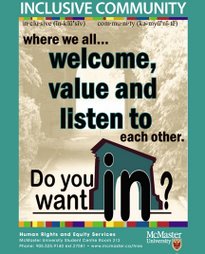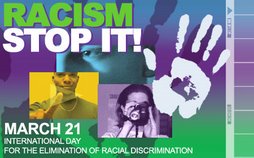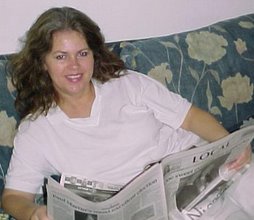SUSAN HOWARD-AZZEH
Suite 112, 111 Fourth Ave., Ridley Square, St. Catharines, Ontario L2S 3P5
EDUCATION:
· TEFL Certificate (Teaching English as a Foreign Language)
University of Saskatchewan. Graduated top of my class. (2008)
· TESL Certificate (Teaching English as a Second Language)
Niagara College, ON. Graduated top of my class. (2008)
· Bachelor of Arts English Literature, minor Educational Psychology, University of Waterloo. Graduated with A+ average, Dean’s Honours List (1995)
PROFESSIONAL CERTIFICATES
· Working with High Risk Youth, Visions for Generations Native Training Services, Byron Edgar, Fort Erie, ON (1999)
· Immigrant and Refugee Determination Process, Francisco Rico-Martinez, Toronto, ON (1998)
· Community-Based Facilitation in a Multicultural Society, Canadian Institute for Conflict Resolution CICR, St. Paul University, Ottawa, ON (1994)
· Community-Based Conflict Resolution, Canadian Institute for Conflict Resolution CICR, St. Paul University, Ottawa, ON (1993)
· Alternative Dispute Resolution for Educators, Conrad Grebel Institute of Peace and Conflict Studies, University of Waterloo, ON (1993)
SKILLS· Excellent organizational and management skills.
· Exceptional writing and verbal communication skills.
· Enjoy working with people, especially youth and new Canadians.
· Comfortable, creative and effective in a classroom setting.
COMPUTER SKILLS
MS-Windows, Word, Excel, PowerPoint; Internet explorer, yahoogroups, podcasts, blogs, Blackboard, WIMBA.
WORK EXPERIENCE:
POLITICAL MOBILIZER AND WRITER – Ontario Health Coalition (2009)
ESL INSTRUCTOR – Niagara College ON (2008)
Speaking Level 2, Integrated Skills Level 3
http://suzansesl.blogspot.com/ , Niagara College Multi-faith Advisory Committee (2008-2010)
CONSTRUCTION - SENIOR PROJECT MANAGER – Norgen Biotek Corp., ON (2005-2006)
Creative consultant building design. Managed logistics and staff. Obtained site plan, architectural drawings, mechanical drawings, permits. Sourced bids, hired contractors. Arranged site servicing.
RESEARCHER / WRITER - Fort Erie Multicultural Centre, ON (2001-2002)
Researched and wrote “The Niagara Report Card on Racism, Racial Discrimination, Xenophobia and Related Intolerance” in conjunction with the United Nations World Conference Against Racism (WCAR). Supervised volunteer committee and University student. Published report. Presented findings at regional conference of professionals. Funded by Department of Canadian Heritage.
FACILITATOR AND TRAINING CONSULTANT – Self-employed (1992-2000)
Designed & facilitated workshops for adults & youth – Anger Management, Bias/Hate Crime, White Supremacist Activity, Anti-racism & Human Rights, Non-adversarial Conflict Resolution
in a Multicultural Society, Mediation, Inclusive Curriculum, Youth Leadership & Communication Skills, Inclusive Barrier-Free Conference Design, Policy Development. Clients included: Brock University; Niagara College; St. Catharines, Fort Erie & Welland Multicultural Centres; YMCA St. Catharines; YWCA Niagara Falls & St. Catharines; Niagara Catholic & Public School Boards; Autism Society; Brighter Futures; Congregation B’nai Israel; Halton & Niagara Police Services; St. Catharines Parks & Rec; CAW Local 199, St. Catharines & District Labour Council; CUPW…
CONFERENCE COORDINATOR – Community Dialogue on Racism and Niagara Region Human Rights Youth Council, ON (1997-1998)
-“The Diversity Advantage – Managing Diversity in the Workplace”, St. Catharines, ON (1998)
-“Youth Empowering Youth and Youth Interfaith Dialogue”, Welland, ON (1998)
-“Youth Empowering Youth” one-day anti-racism conference, St. Catharines, ON (1997)
INSTRUCTOR - Niagara College, Welland, ON (1996-97)
Instructor of Anti-racism, and Human Rights elective courses for students through the Niagara College Labour Studies Program.
ESL INSTRUCTOR - Provided settlement services and ESL to spouses of University of Waterloo visa students (1981-1989) and to immigrant children at Dovercourt Elementary, Toronto (1978).
VOLUNTEER EXPERIENCE:
CONFERENCE AND EVENT COORDINATOR – extensive list available upon request
COMMUNITY CAPACITY BUILDING – extensive list available upon request
MEDIA EXPERIENCE – newspaper columnist, radio host, producer for Cogeco and Macleans, political guest
EXECUTIVE DIRECTOR - Community Dialogue on Racism, St. Catharines, ON (1994-1999)
LANGUAGE INSTRUCTOR - Heritage Language Programs, ON (1991-1993) Taught introductory Arabic language for the Islamic Societies of St. Catharines and Niagara Peninsula.
CREATIVE CONSULTANT – Architectural design, Mosque, Waterloo, Ontario (1986)
AWARDS:· YWCA Woman of Distinction – Public Affairs and Communication (2009)
http://www.niagarathisweek.com/news/article/186459--niagara-women-honoured ,
http://yahyaottawa.blogspot.com/2009_05_15_archive.html .
· Canadian Islamic Congress Lifetime Community Service Award (2005)
· St. Catharines Citizen of the Year Finalist (2000)
· Federation of Canadian Municipalities Award of Distinction (CDR) (1999)
· Youth Outreach Award, MOSAIC (1999)
· YMCA Canada Peace Medal (1998)
· Congregation B’nai Israel Commendation (1998)
· Niagara Regional Police Service Commendation (1997)
· Baha’i Unity in Diversity Award (1997)
· St. Catharines Mayor’s Award of Merit (1996)
· Ontario Federation of Labour Human Rights Award (1995)
· University of Waterloo Arts Faculty Award (1993)
· Drafting and Mechanical Technology Award (1977)
 Fun, Fun, Fun :)
Fun, Fun, Fun :)







